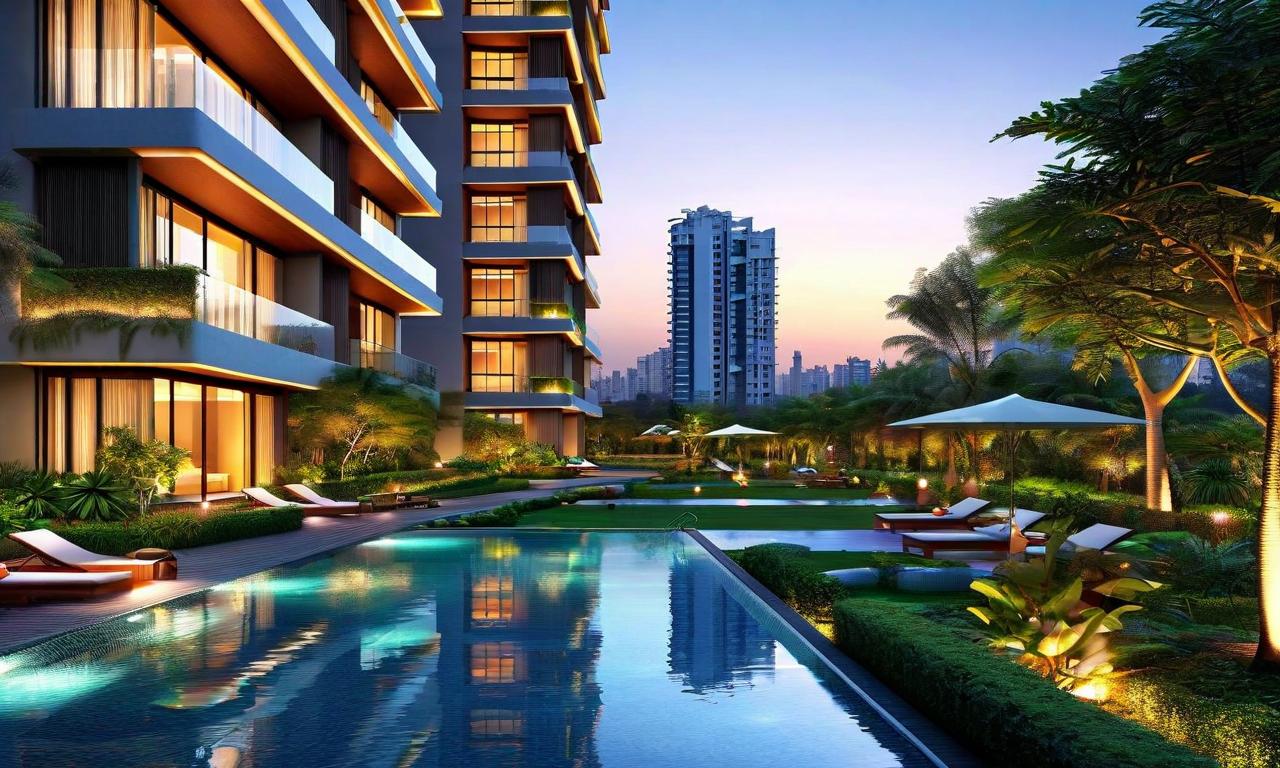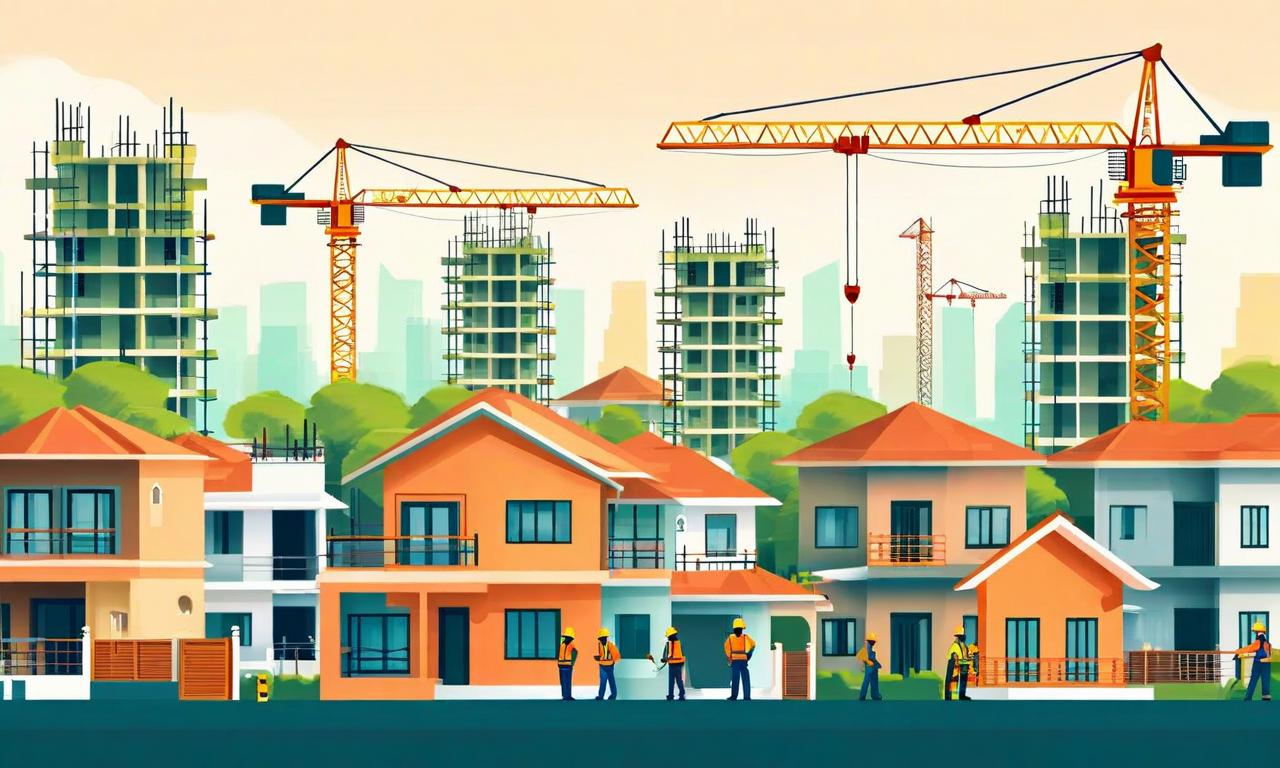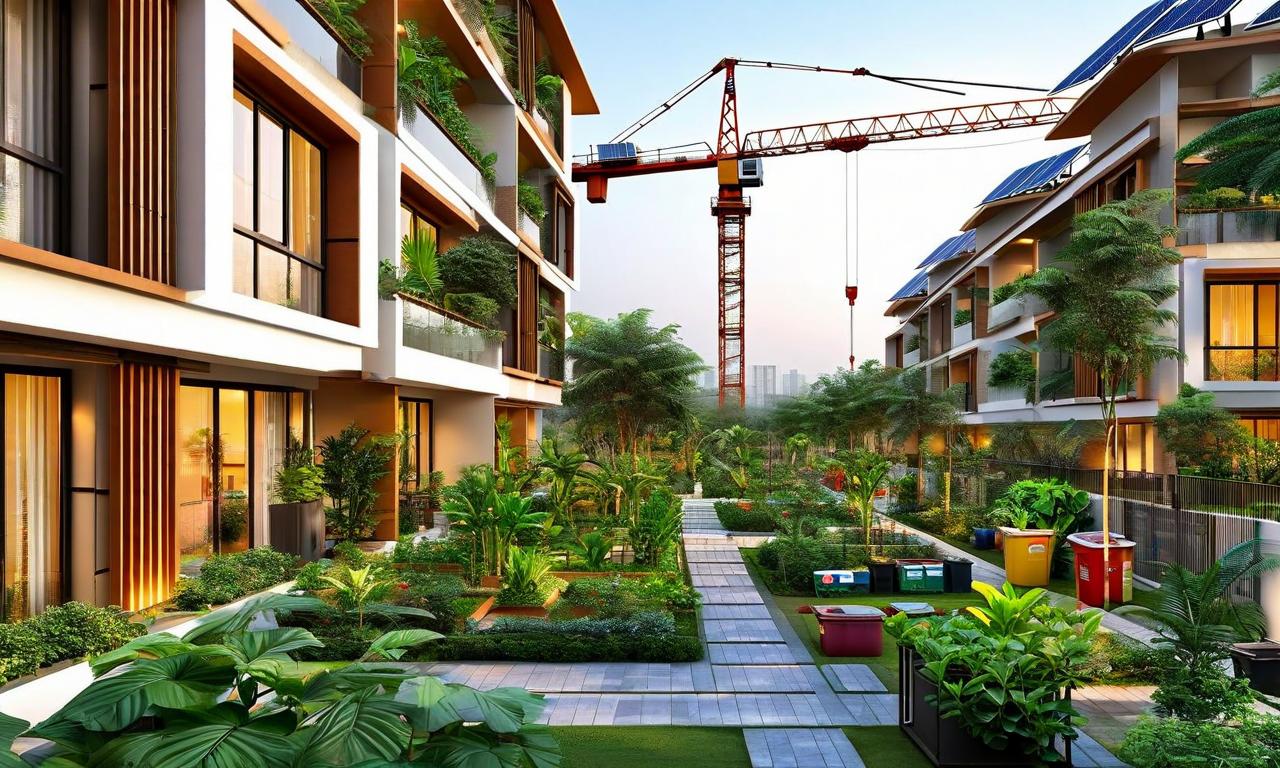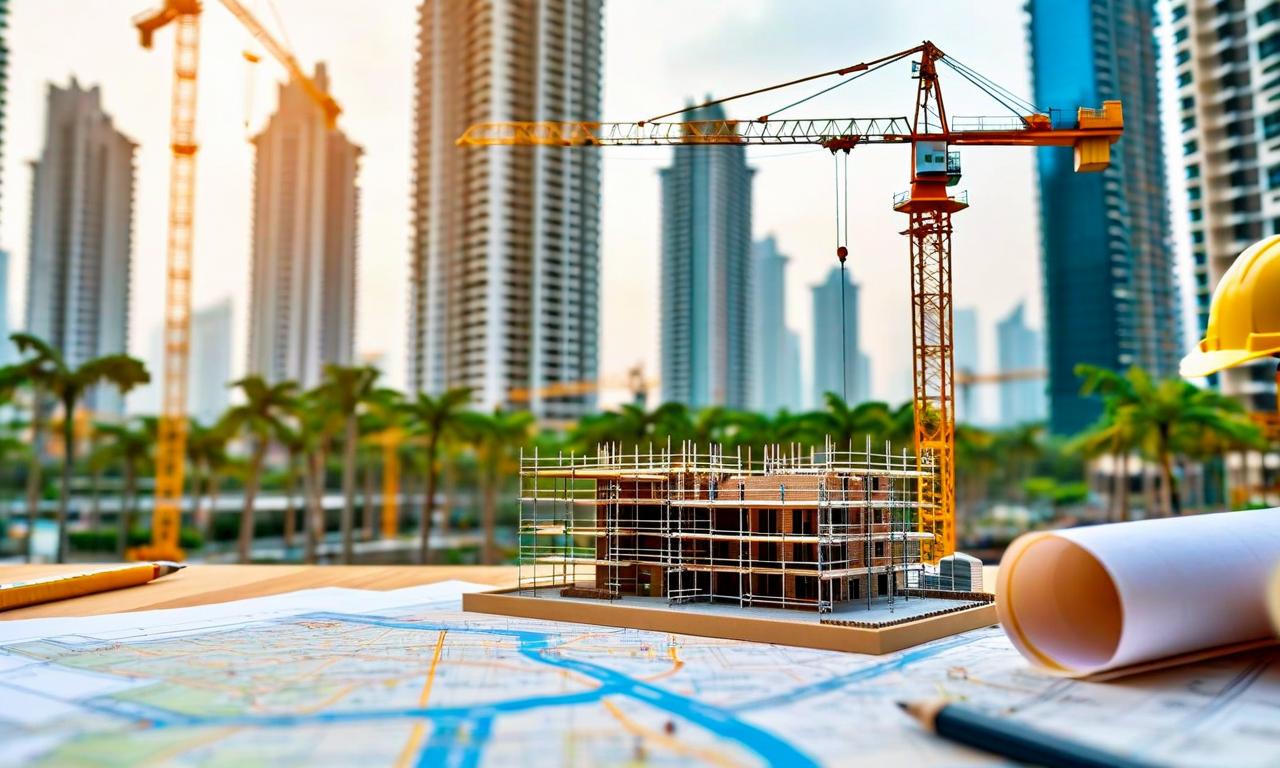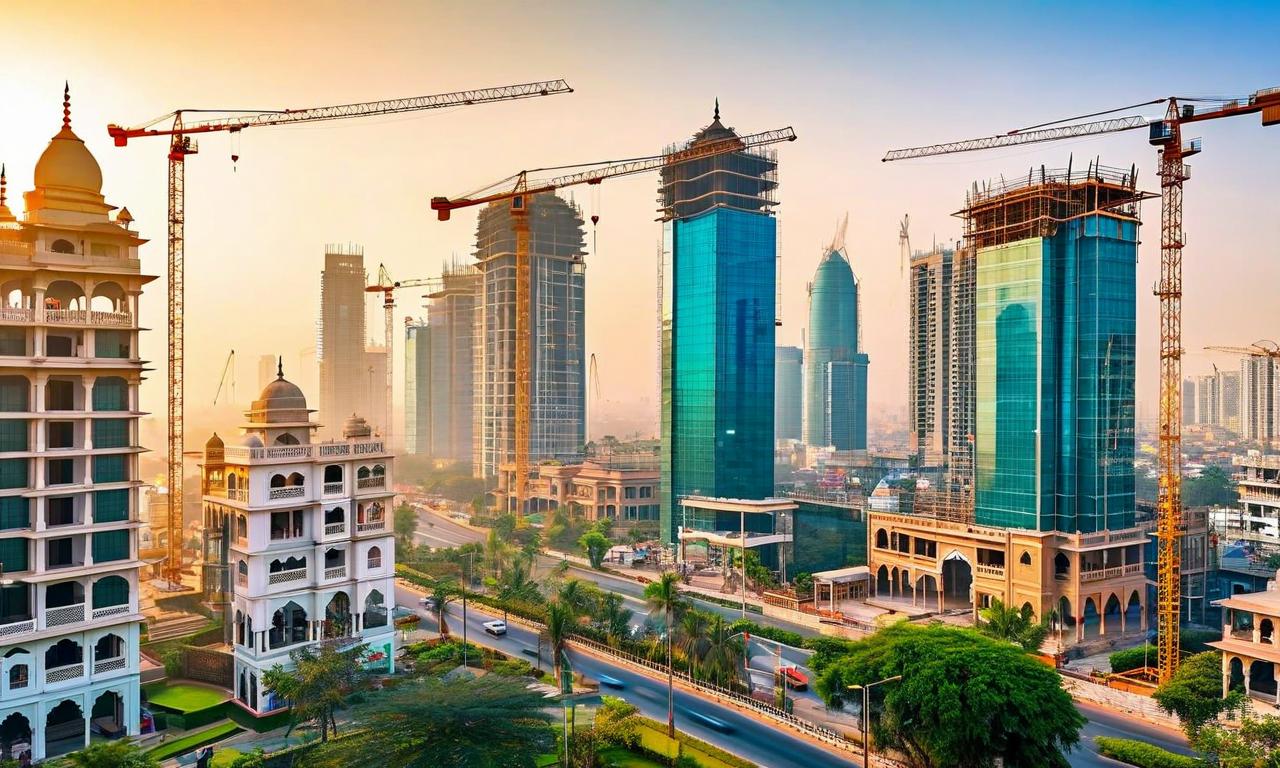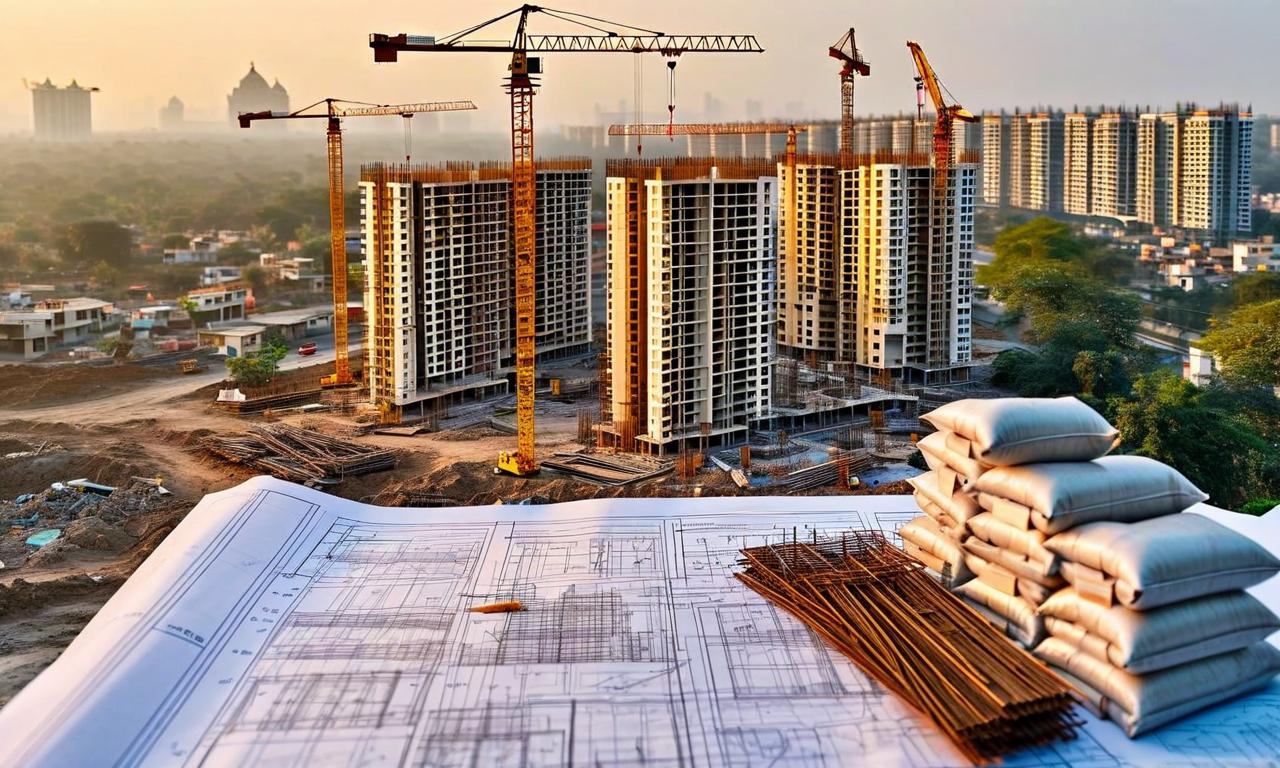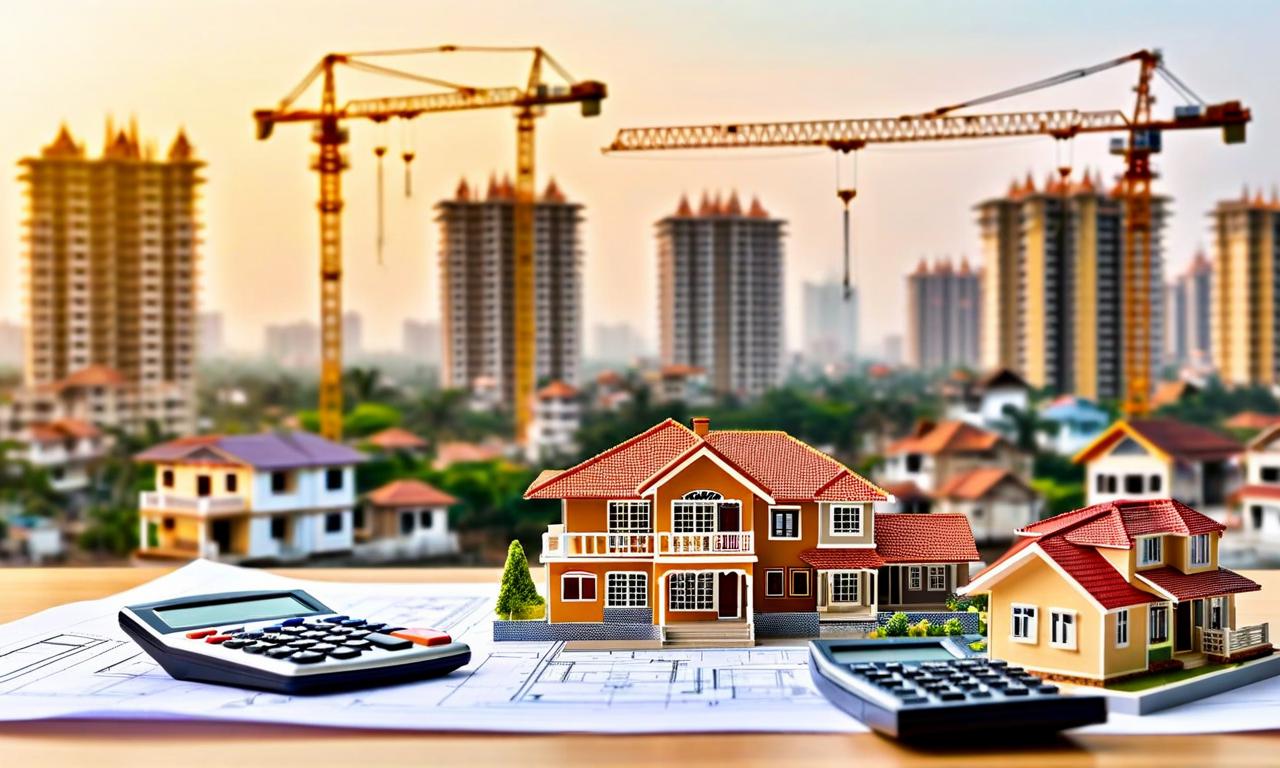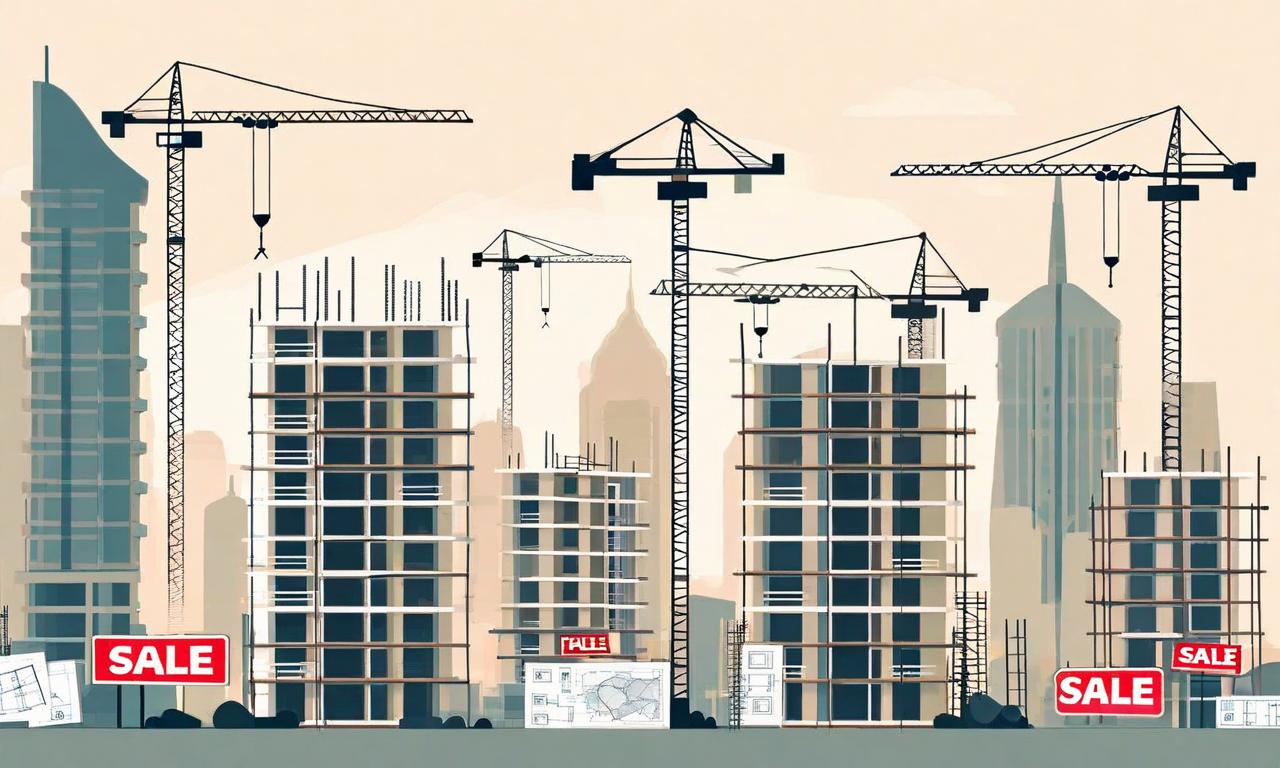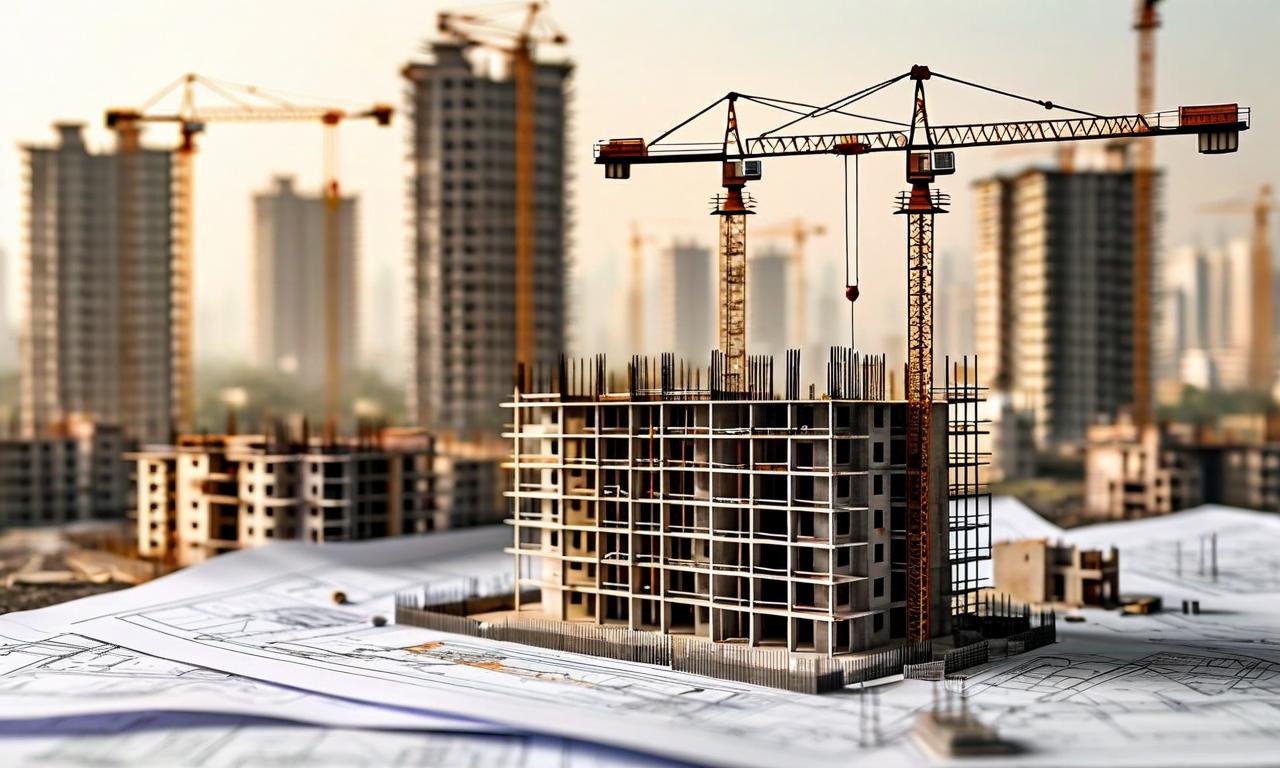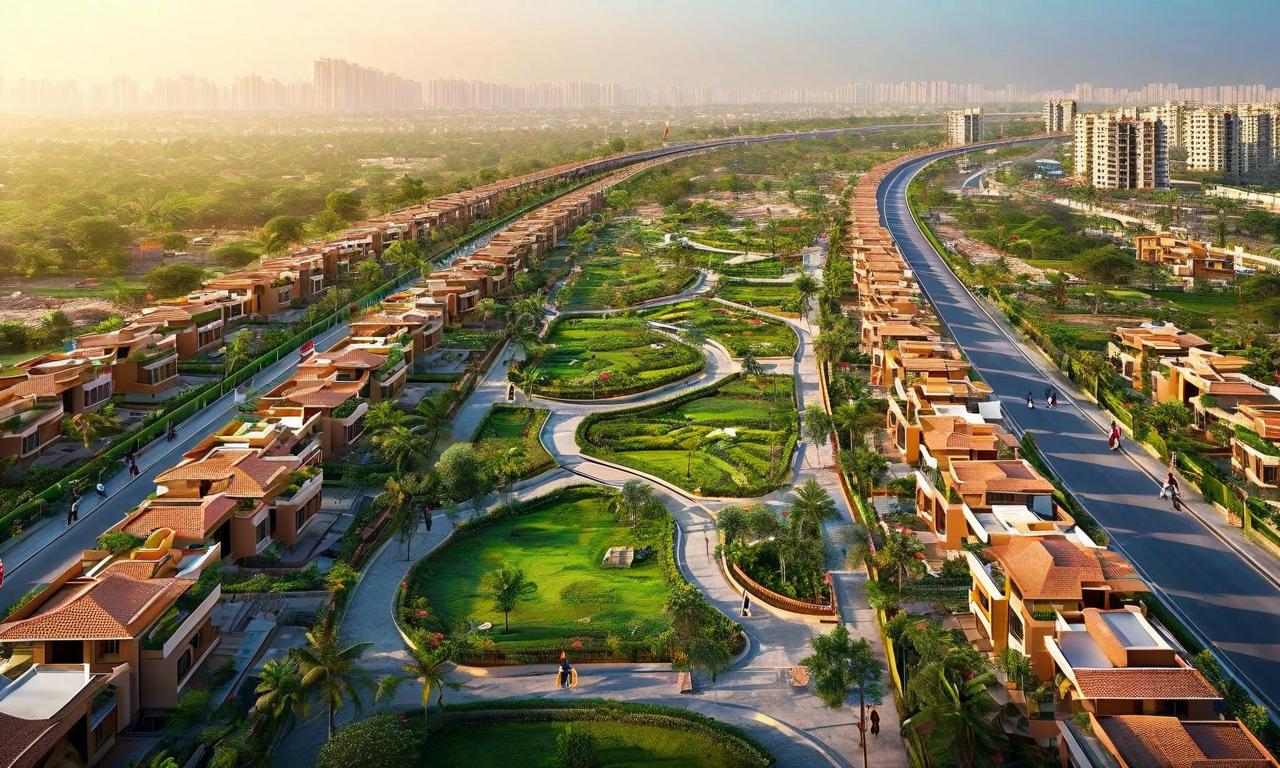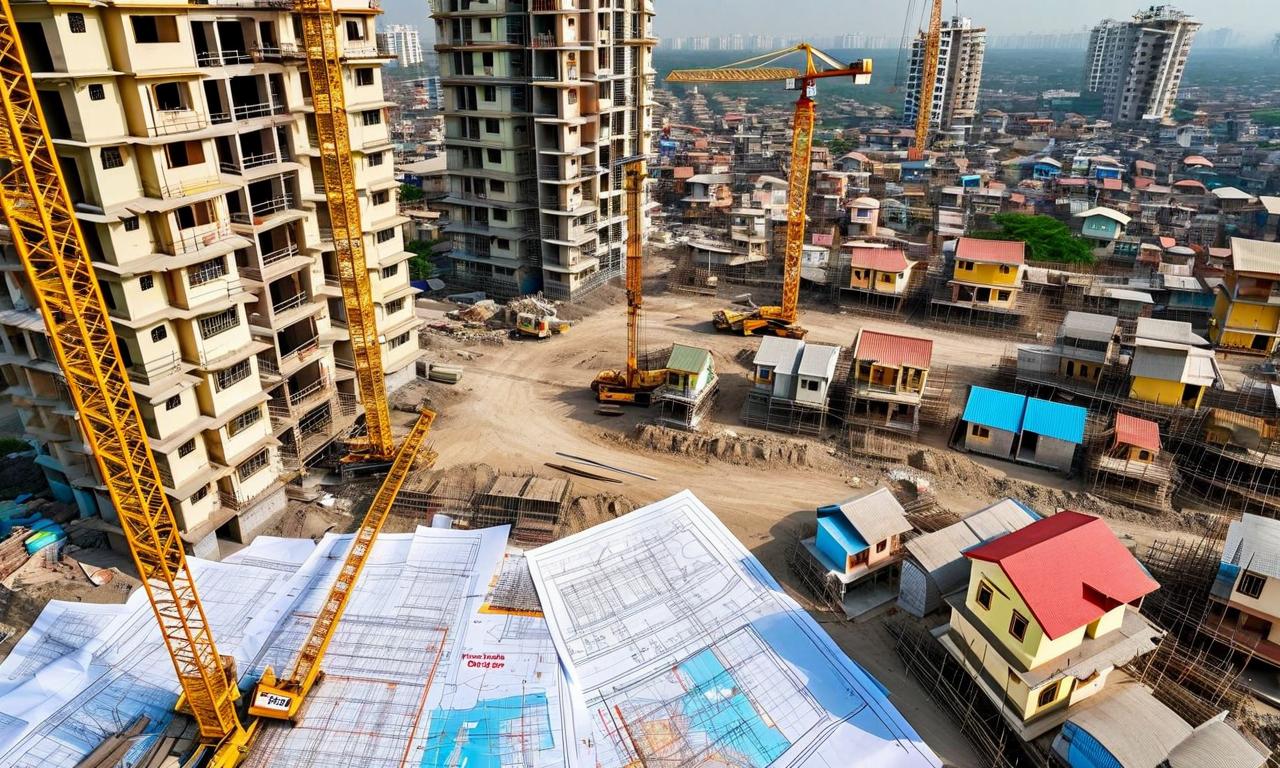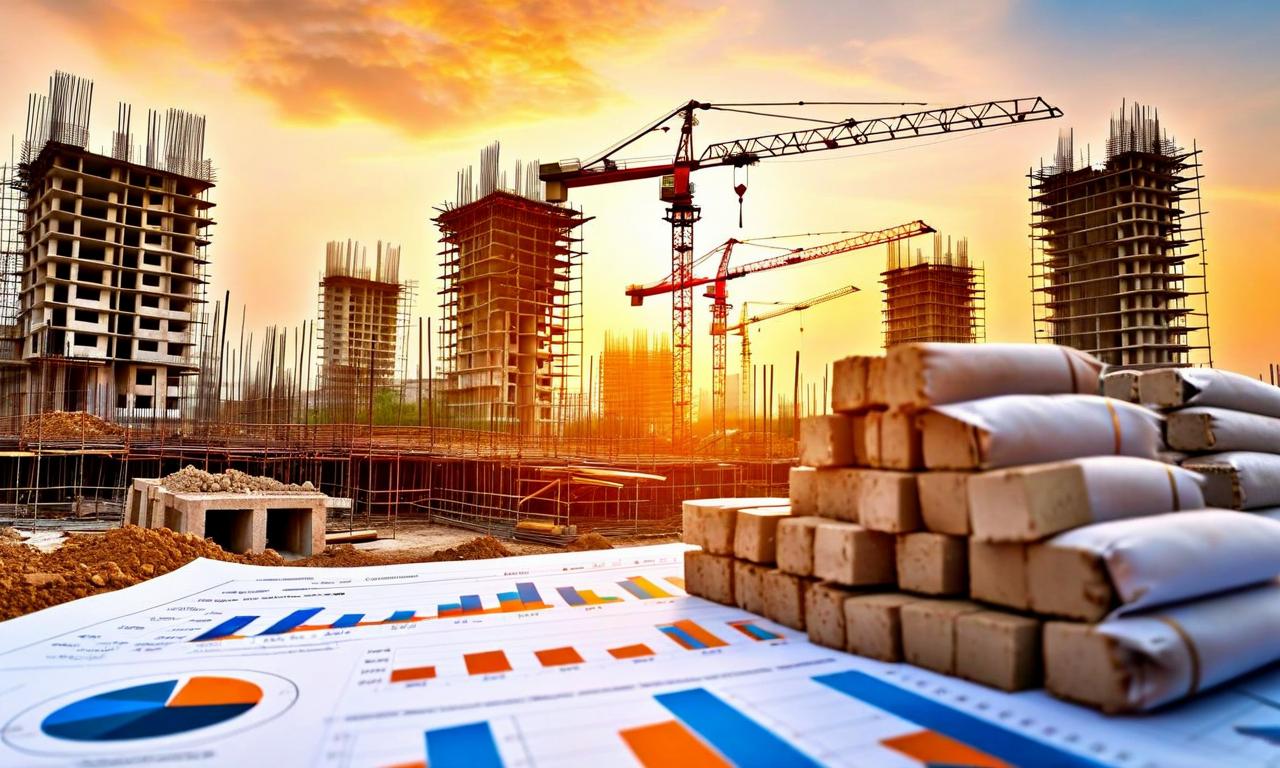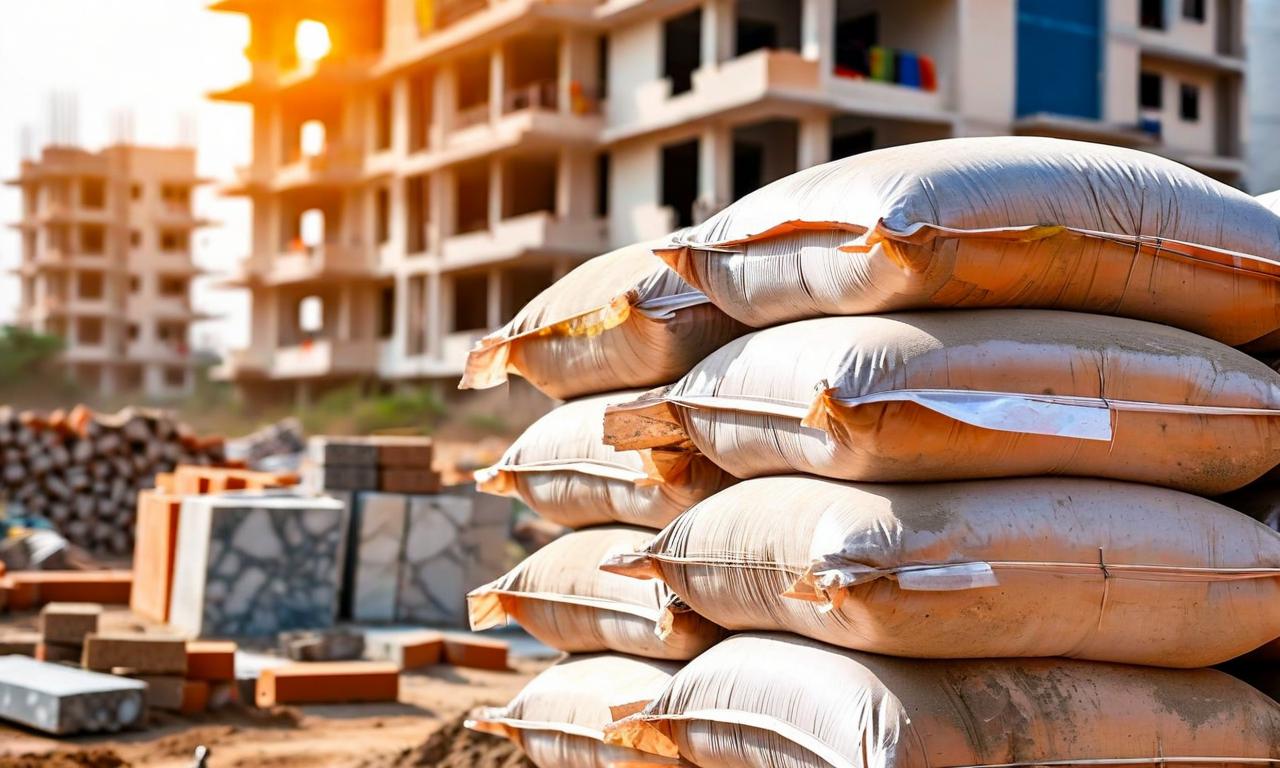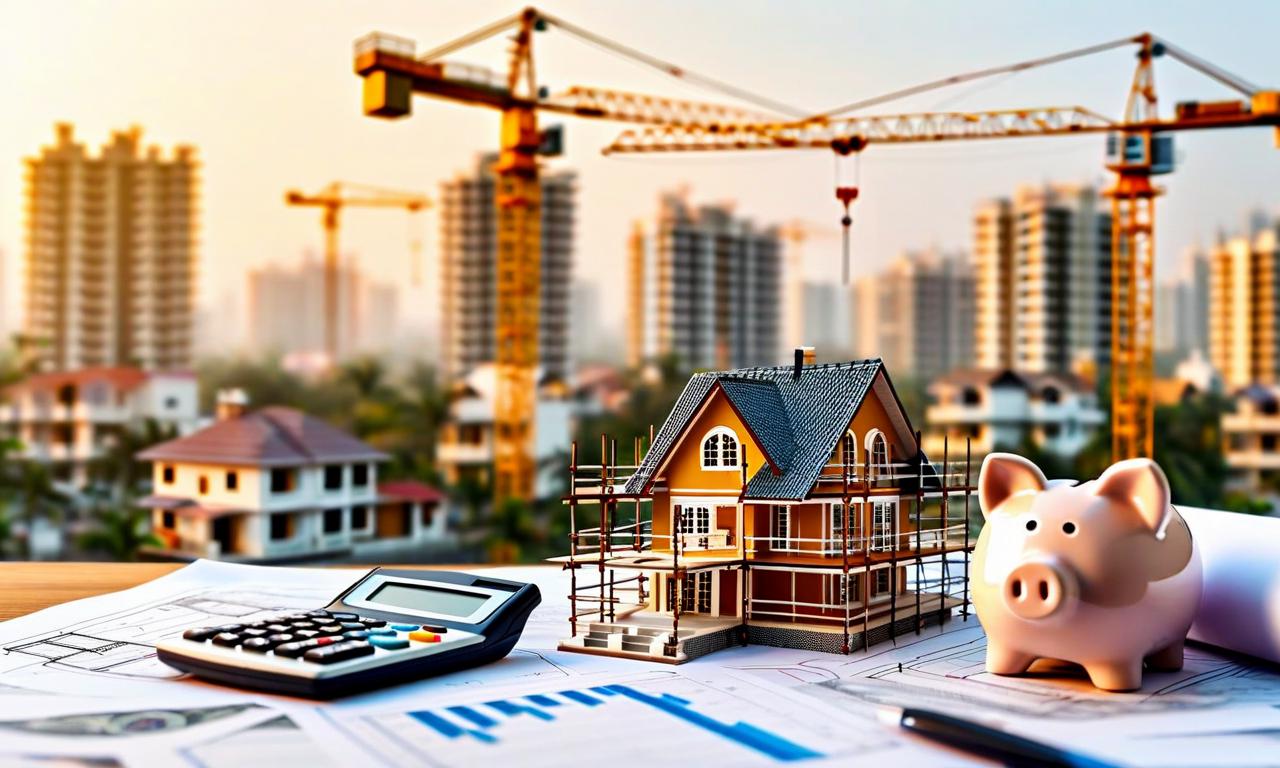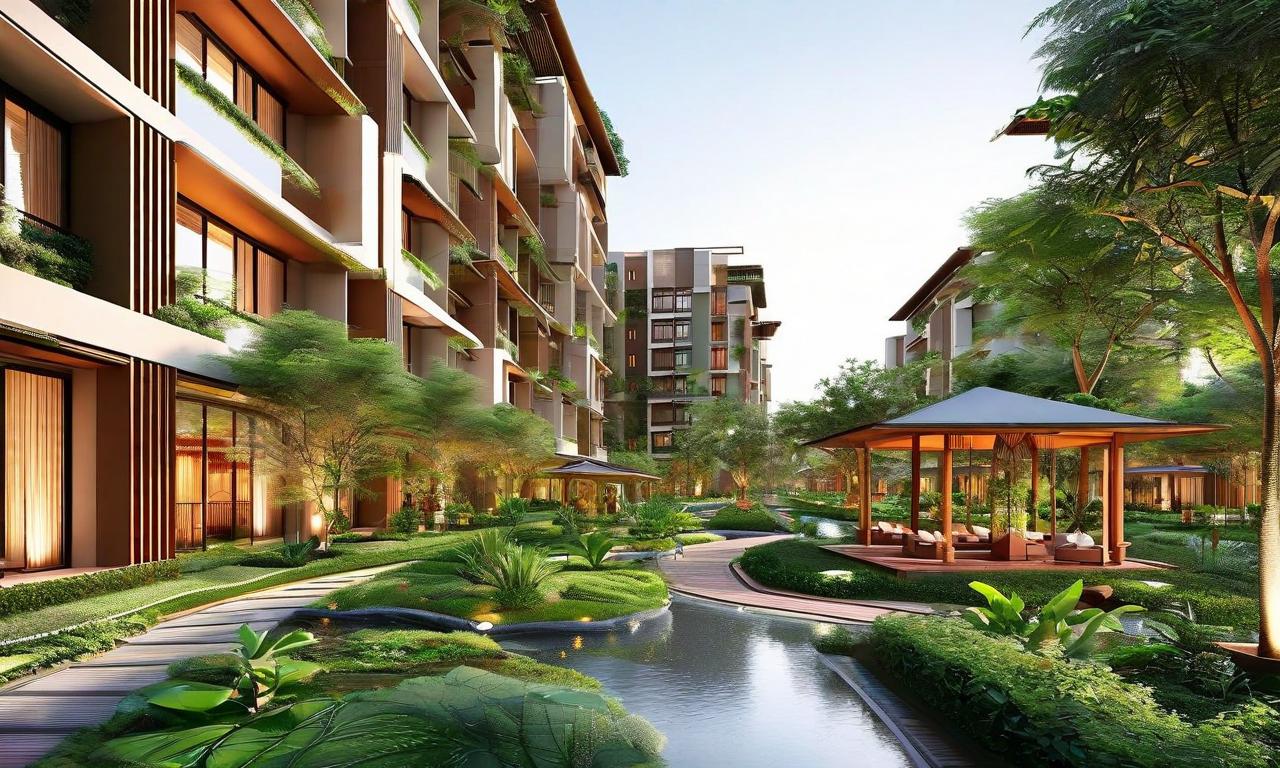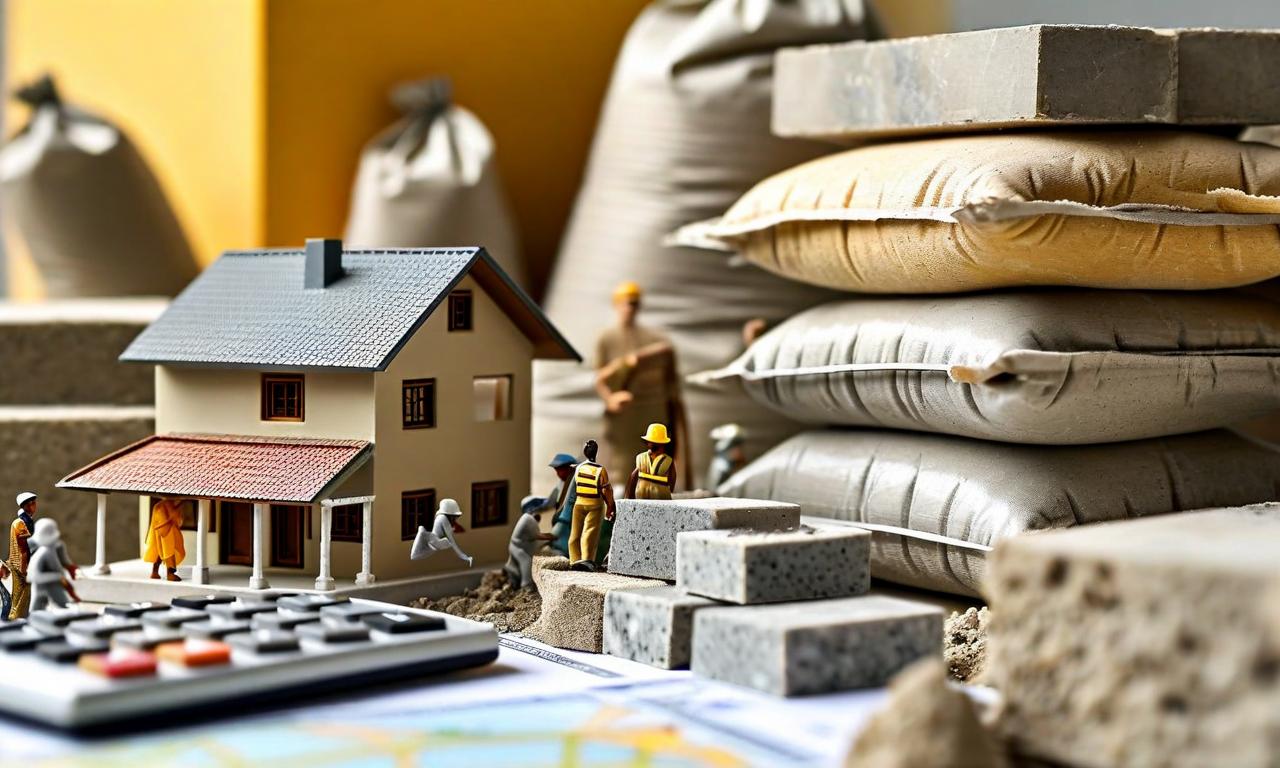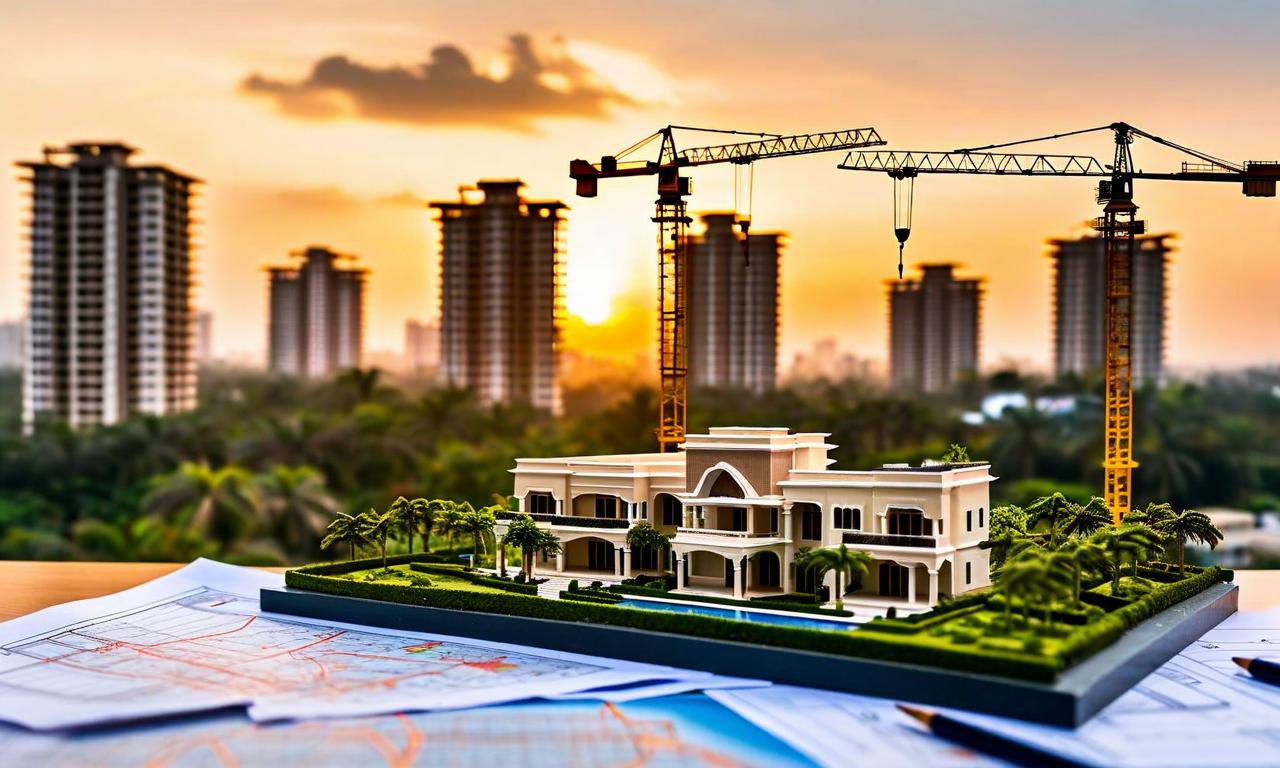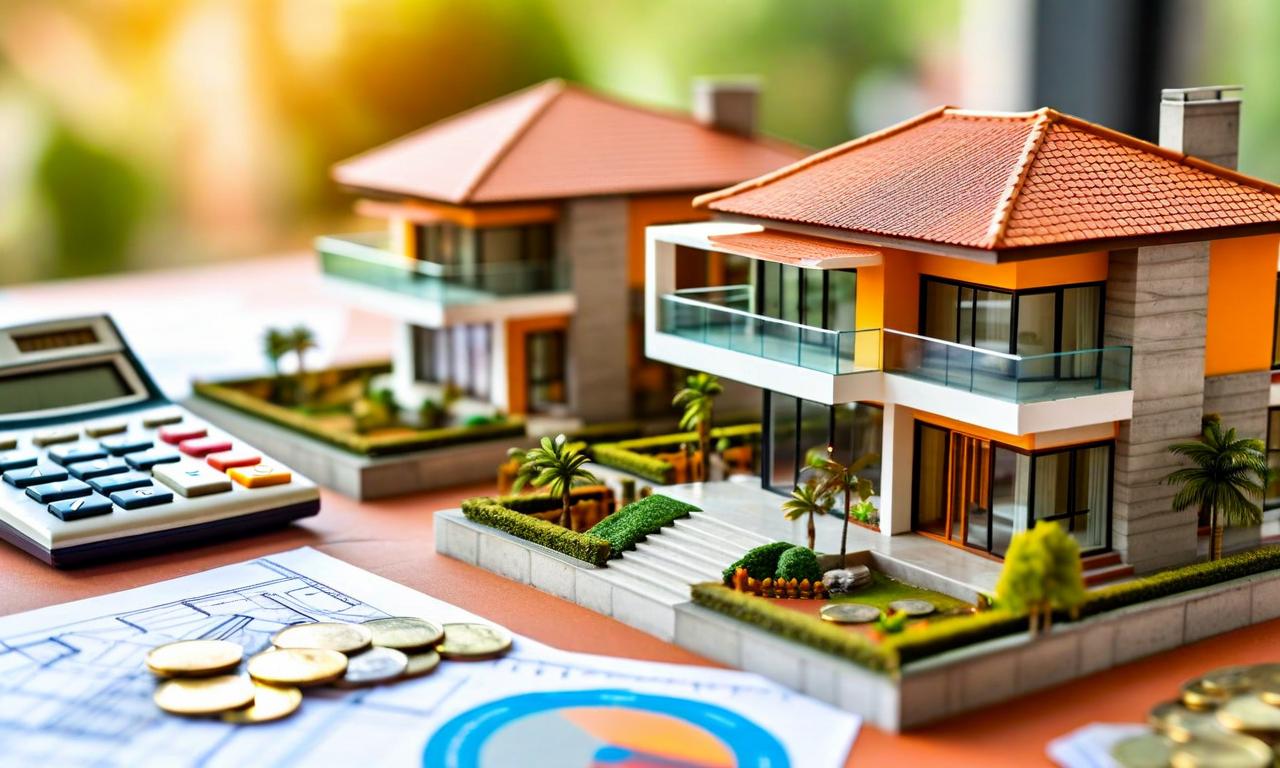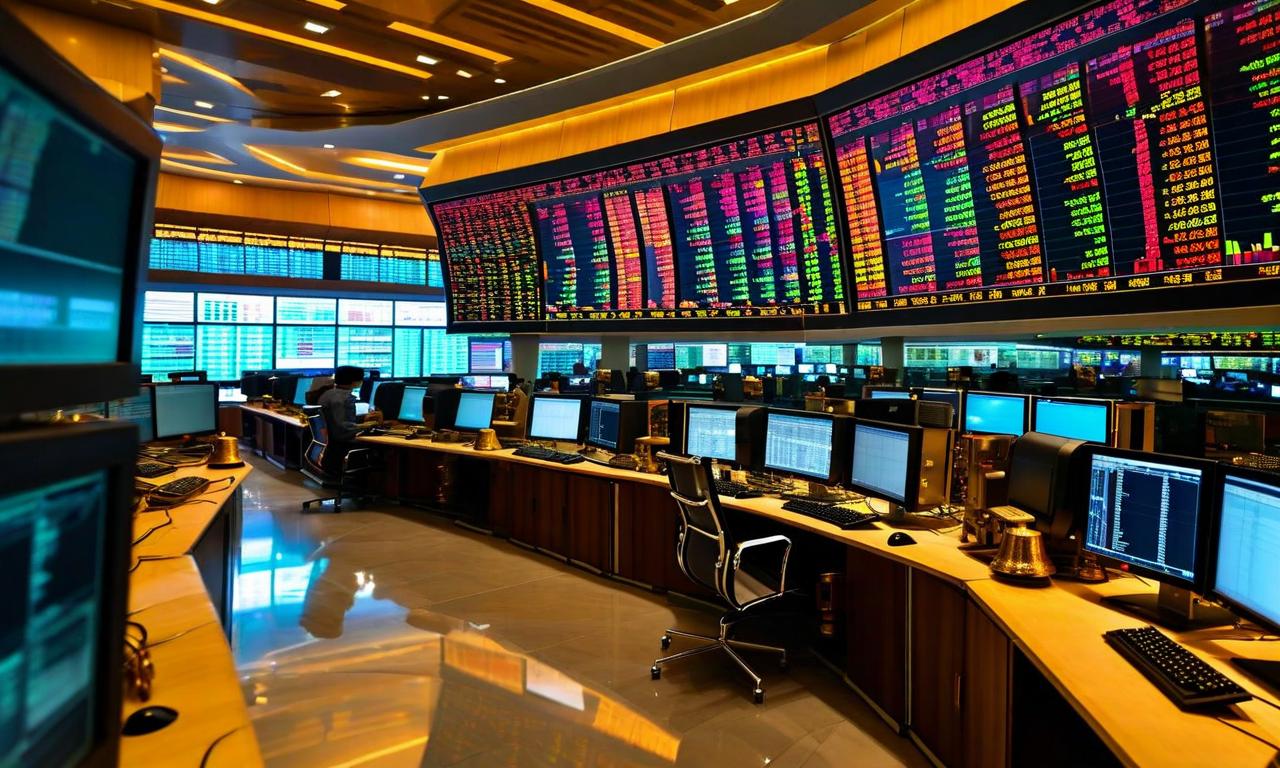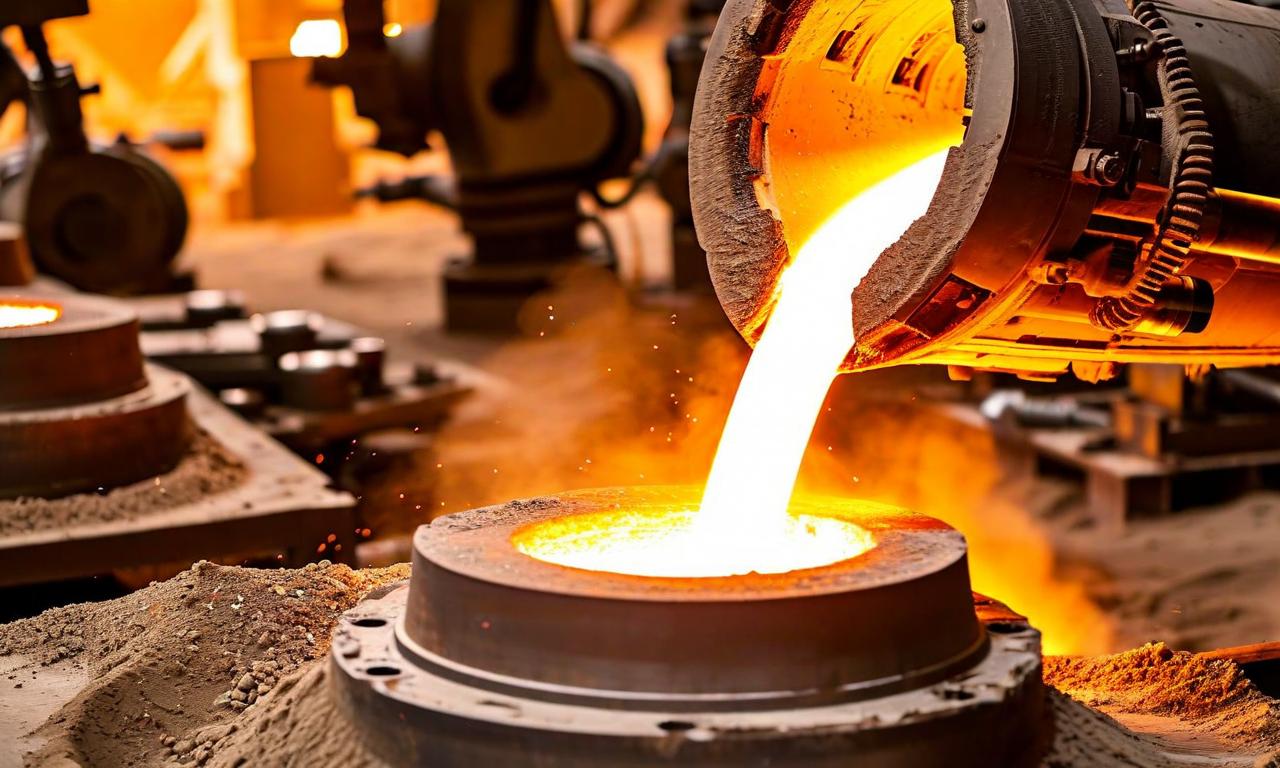India's Green Real Estate Surge: Sustainability Drives Market Growth and Investment
India's green real estate sector has experienced significant growth, with the eco-friendly building footprint doubling to 13 billion square feet in three years. Over 2 million residential units are green-certified, and 61% of Grade-A office stock meets ESG standards. Green-certified properties enjoy higher occupancy rates (80-90%) compared to non-certified ones (65-85%), command rental premiums of 10-18%, and reduce operational costs by 20-50%. Government incentives include property tax rebates and additional FSI/FAR for green projects. However, challenges persist, including 3-10% higher initial costs and certification expenses. The sector's growth varies across cities, with Bengaluru, NCR, and Pune leading the adoption.
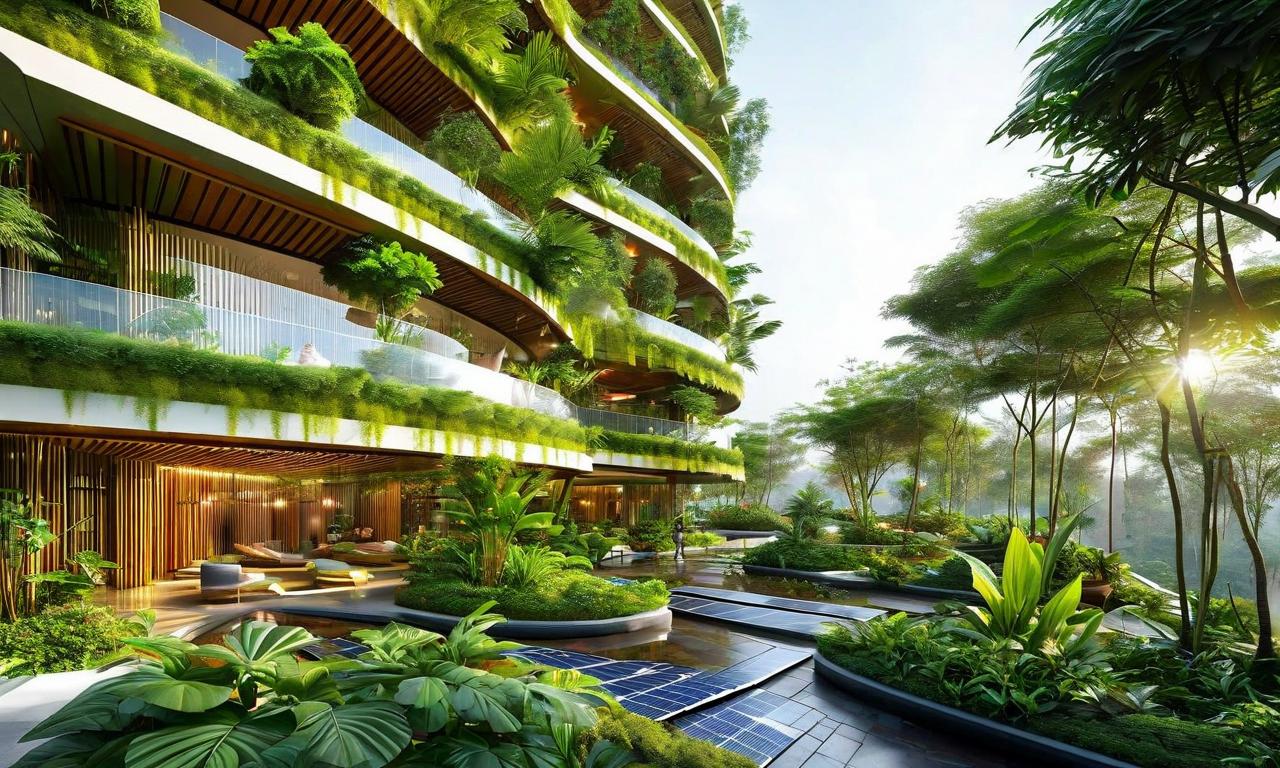
*this image is generated using AI for illustrative purposes only.
India's green real estate sector has experienced a remarkable surge, with sustainability emerging as a central theme in property development and investment. The country's eco-friendly building footprint has more than doubled in just three years, reaching an impressive 13 billion square feet. This growth reflects a significant shift towards environmentally conscious construction and design in the Indian real estate market.
Key Highlights of India's Green Real Estate Market
| Metric | Value |
|---|---|
| Total Green Real Estate Footprint | ~13 billion sq ft |
| Green-Certified Residential Units | Over 2 million |
| Grade-A Office Stock Meeting ESG Standards | 61% |
| Occupancy Rates for Green-Certified Properties | 80-90% |
| Occupancy Rates for Non-Certified Properties | 65-85% |
| Rental Premium for Green Properties | 10-18% |
| Operational Cost Reduction | 20-50% |
| Initial Capital Outlay Increase | 3-10% |
Benefits and Incentives
The shift towards green buildings is driven by numerous advantages and government incentives:
Higher Occupancy Rates: Green-certified properties consistently outperform their non-certified counterparts in occupancy rates.
Rental Premiums: Sustainable buildings command rental premiums ranging from 10% to 18%.
Cost Efficiency: Operational costs for green buildings are 20-50% lower than traditional structures.
Government Incentives:
- Cities like Nagpur and Pune offer property tax rebates of 5-20% for IGBC-accredited buildings.
- States including Maharashtra and Karnataka provide additional Floor Space Index (FSI) or Floor Area Ratio (FAR), or fast-track approvals for green projects.
Financial Sector Support: Banks are offering green home loans at concessional rates, with approximately 10-basis-point discounts for certified buildings.
Challenges and Market Dynamics
Despite the growth, the green real estate sector faces several challenges:
Higher Initial Costs: Green buildings require a 3-10% higher initial capital outlay compared to traditional projects.
Certification Expenses: The process of obtaining and maintaining green certifications adds to the overall project costs.
Evolving Standards: The industry must adapt to changing sustainability standards and regulations.
Market Variations: Adoption rates vary significantly across cities, with Bengaluru, NCR, and Pune leading, while smaller cities remain more cost-sensitive.
Outlook
The substantial growth in India's green real estate sector indicates a strong market trend towards sustainability. As developers report more predictable maintenance expenses and lower vacancy risks for green properties, this segment is likely to continue its expansion. However, the success of this growth will depend on balancing the higher upfront costs with long-term benefits and addressing the varying market dynamics across different regions in India.
The green building movement in India is not just a passing trend but a fundamental shift in the real estate landscape. As awareness of environmental issues grows and regulations tighten, sustainable construction practices are becoming increasingly important for developers, investors, and homebuyers alike. This transformation promises to reshape India's urban landscape, promoting energy efficiency, resource conservation, and improved quality of life for residents and workers in these green spaces.
